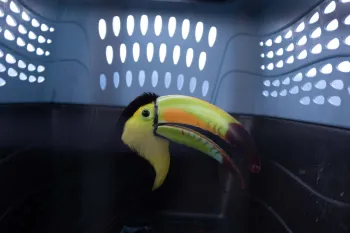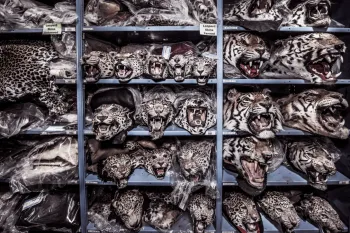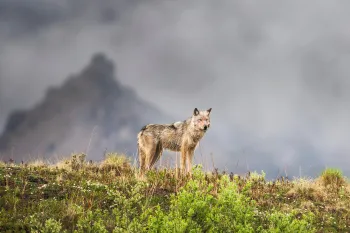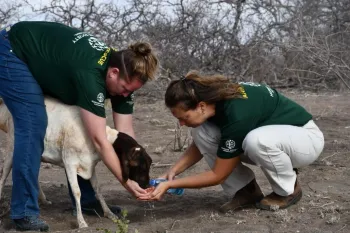As human development encroaches on nature, there are many ways that wild animals can become displaced from habitats where they belong. Such threats comprise what is truly a global problem, with global consequences for wild species, which is why our colleagues all over the world have mobilized to help raise awareness, decrease demand, strengthen frameworks for legal enforcement of wildlife laws and prevent animals from being killed or captured and sold into the wildlife trade in the first place.
In the face of such an immense and broad threat facing wild animals, these actions may seem small, but they raise awareness of the plight of individual animals fighting to stay wild and of course, make all the difference to these lucky few.

Eduardo Cabrera
Recently, a group of people from the Asociacion Rescate y Conservacion de Vida Silvestre (known as ARCAS), with the support of Humane Society International/Latin America, arrived at the protected Maya Biosphere Reserve in the rainforests of Guatemala to right a wrong for a little motley crew of creatures: one anteater, two raccoons, one margay and two royal toucans. The anteater, margay and toucans are considered endangered in Guatemala. These animals, and the people caring for them, had spent months preparing for their return to the wild in the reserve, a protected area that spans 13.3 million acres in Peten.
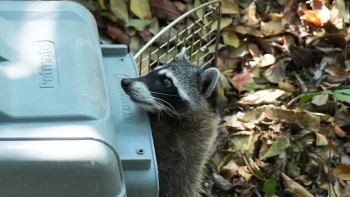
Eduardo Cabrera
For animals who are victims of wildlife trafficking and other exploitative human activities, ARCAS carries out physical, veterinary and behavioral rehabilitation using humane and scientific standards.
Both raccoons were rescued as juveniles from the pet trade in August 2023. They were treated at the ARCAS rescue center before being moved to larger rehabilitation enclosures. These enclosures replicate a wild environment as closely as possible, to ensure the raccoons’ safety and well-being.
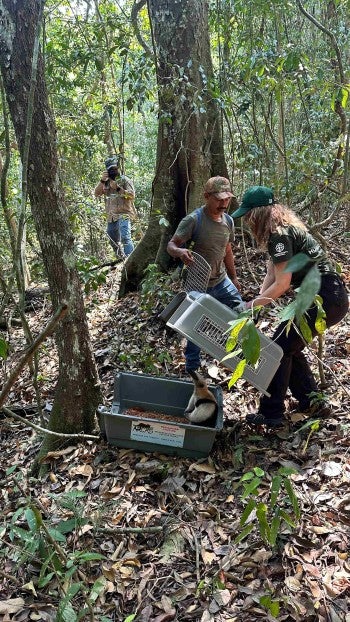
Humane World for Animals
The adult toucans arrived separately in 2023. It is believed that they were being kept as pets before they were brought to the rescue center. Being rehabilitated together allowed the toucans to retain their wild behavior and quickly advance in their rehabilitation process. Rehabilitation is designed to ensure that animals can survive in the wild by hunting for food and hiding from predators.
HSI/Latin America and ARCAS have been working together in wildlife protection and conservation in Guatemala since 2007. This joint project aims to end wildlife trafficking for the pet trade and other human activities that negatively impact wild animals.
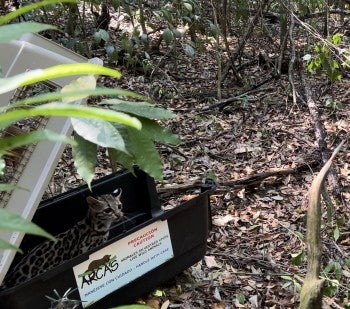
HSI
Working with local authorities is key to heightening awareness about what wild animals need. The tamandua, a kind of anteater, was brought to the rescue center as a baby in 2023 by local authorities. Either her mother had passed away or mother and child had become irreparably separated. Baby tamanduas require a lot of care, with bottle feeding every few hours, as well as supervised time outside to work on their climbing and foraging skills. The dedicated ARCAS staff ensured that she had what she needed to grow up into a capable and independent individual.
The rescue center is also a haven for wild animals who come into conflict with humans. The margay was brought by authorities to the rescue center after being found in a hen coop several months ago.
Returning the animals to the wild isn’t just for their own individual good. Regaining freedom is essential so that wild populations as a whole can be sustained in the natural habitats where they belong. As these animals flew into the trees and disappeared on foot into the forest, there was a sense that things had been made right again.
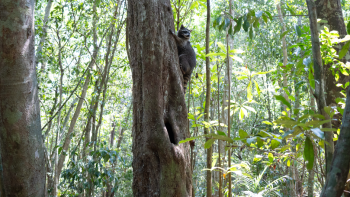
HSI
As human beings dominate the natural world, it is only right that we create and support infrastructures to rehabilitate wild animals who become displaced because of our actions. The illegal wildlife trade is now one of the most lucrative illicit markets in the world, threatening all kinds of species. The trade puts a price tag on animal life, turning individuals into commodities. Animals who aren’t killed for their body parts are smuggled long distances for the pet trade, causing them pain and distress and jeopardizing wild populations. Human-wildlife conflicts, too, are usually the consequence of habitats being squeezed or fragmented because of human development; too often in these cases the animals pay the price with their lives.
It’s become a common saying in the animal rescue movement that saving one animal will not change the world, but the world will change for that one animal. Clearly, the world changed for this crew as soon as they set paw or claw on wild, protected ground. And we’ll keep fighting for their kinds until the world changes for the better, too.
Follow Kitty Block @HSUSKittyBlock.
